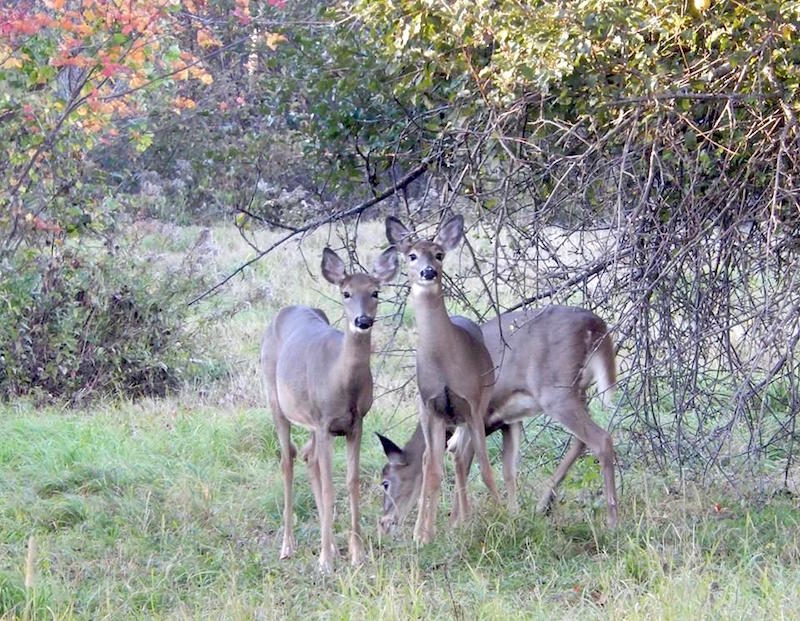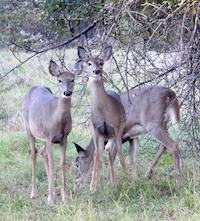My backyard was home to several large hostas. These plants prefer shady sites, and they were thriving where I had them planted. Then, one day, they simply disappeared.
All that was left were a few small branches sticking out of the ground. Something had eaten my hostas and the most probable culprits were deer. They tend to cause more problems for homeowners than most other types of wildlife.
As counties across Georgia continue to develop, wildlife habitats are disturbed and destroyed. This drives deer and other wildlife into home landscapes, where they feast on plants. Deterring them can be a challenge. They may be beautiful creatures, but when they eat your precious plants, deer live up to the nickname “rats with antlers,” which is what many gardeners call them.
Deer prefer plants that are rich in nutrients, and they’re particularly troublesome in the spring when the does are pregnant and the young bucks are growing. However, they can cause gardeners problems any time of the year.
In addition to eating plants, deer can damage trees. Young bucks frequently rub their antlers on trees, damaging the bark. This action can be particularly harmful to young trees that are trying to become established in the landscape. Wrapping a barrier around the tree trunk, such as tubing, mesh wire or other, similar materials, will make the tree less attractive to the deer and reduce the damage.
Although there are no silver bullets, University of Georgia Cooperative Extension offers several control tactics that will help minimize damage caused by deer.
Try to keep deer away by selecting plants they don’t like, such as butterfly bushes, barberry, Carolina jessamine, marigolds and zinnias. Deer also avoid plants with strong aromas, such as lantana, rosemary, sage and thyme.
Deer prefer certain plants over others, but if their supply of food is limited, they will consume most any plant. They favor hostas, daylilies, candytuft and hibiscus, among others.
Control deer by building a fence at least eight feet in height. Deer can jump over fences that are shorter than eight feet. Some gardeners install wire fences connected to a battery. When deer come into contact with the fence, they receive an electric shock. The deer are not harmed by the shock, but they are startled. Over time, the deer learn to avoid the fence. Establishing a fence like this can be a costly investment.
Although not 100 percent effective, taste repellents that deter deer can be sprayed on plants. These chemicals are composed of materials that have unpleasant scents, such as ammonia or rotten eggs. The offensive smell and bitter taste cause the deer to avoid these plants and go somewhere else to feed. The effectiveness of taste repellents deteriorates over time, so they must repeatedly be applied, especially after rainfall. Milorganite, an organic fertilizer made of composted sewage sludge, has also been shown to repel deer.
Shooting deer is not permitted in residential areas, but you can try to scare them away. Attaching pie tins, aluminum foil and other items to trees can frighten deer. Lights, sprinklers and barking dogs can also scare them away.
While there is no foolproof way to eliminate the presence of deer in your landscape, these tactics can be used to reduce their detrimental impact.








